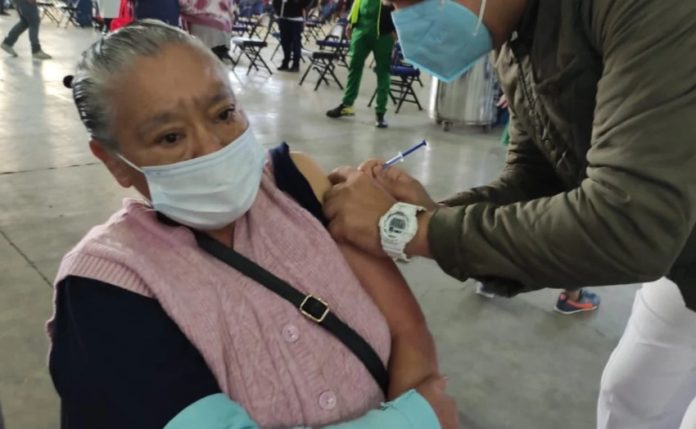Citing the delay in the delivery of Pfizer vaccines earlier this year, the federal government has modified its Covid-19 vaccination schedule, pushing back by one month the start date of the different stages of the national vaccination plan.
“The schedule of stages 2 to 5 has been modified and may undergo future modifications as it depends on the delivery of the pharmaceuticals,” the government said.
Stage 2 of the vaccination plan — the inoculation of people aged 60 and over and non-frontline health workers — will extend into May, according to the modified schedule. That presumably means that President López Obrador’s pledge to immunize all seniors with at least one vaccine dose by the end of April will not be fulfilled.
Almost 7.4 million seniors have so far received at least one dose, a figure that accounts for only 47% of the 15.7 million people aged 60 and over.
The inoculation of people aged 50 to 59 (stage 3) will take place in May and June while those aged 40 t0 49 (stage 4) will get their shots in June and July. Stage 5 — the vaccination of people aged 16 to 39 — is now scheduled to begin in July and conclude in March 2022.
The government said in late February that it expected to receive more than 100 million vaccine doses by the end of May, but as of Thursday night only 16.08 million had arrived. Mexico has secured most of those doses via commercial arrangements but received some 2.7 million AstraZeneca shots from the United States government under a loan scheme.
Finance Minister Arturo Herrera said Thursday that the government expects to receive an additional 5.5 million AstraZeneca shots in late April and May via Covax, a World Health Organization-backed initiative for equitable vaccine distribution.
Drug regulator Cofepris said Wednesday that it had no plans to limit use of the AstraZeneca vaccine although many countries have recommended that it not be used to inoculate younger adults due to growing evidence that it can cause blood clots in rare cases.
In addition to that vaccine, Mexico has used Pfizer, SinoVac, CanSino and Sputnik V shots to inoculate citizens. Four of the five vaccines used to date require two shots, whereas the Chinese-made CanSino is a single-shot vaccine. Herrera said the government has no plans to purchase Johnson & Johnson’s single-shot vaccine, which is currently being used in the United States.
One additional vaccine that could be used in Mexico is India’s Covaxin, to which Cofepris granted emergency use authorization earlier this week.
Just over 10.64 million vaccine doses — two-thirds of all doses received — had been administered in Mexico by Thursday night, according to Health Ministry data. Of the almost 7.4 million seniors who have received one shot, nearly 940,000 have had their second required jab.
More than 530,000 vaccine doses were administered on Wednesday, a new daily record, while more than 334,000 were given on Thursday, according to preliminary data that will be revised upward on Friday.
The New York Times vaccinations tracker currently shows that 8.4 doses per 100 people have been administered in Mexico, compared to 115 in Israel, which ranks first, 61 in Chile, 53 in the United States and 20 in Canada. Mexico’s southern border neighbors, Guatemala and Belize, have administered 5.8 and 0.7 doses per 100 people, respectively.
Only 7.1% of Mexico’s population has received at least one vaccine dose while just 1.3% is fully vaccinated.
Some health experts estimate that 70% to 90% of the population needs to be inoculated or infected with the virus to reach herd immunity. For that to occur, a minimum of around 90 million Mexicans — the country’s population is just over 126 million — would need to have Covid-19 antibodies generated either by infection or inoculation.
Meanwhile, Mexico’s accumulated tally of confirmed coronavirus cases rose by 5,140 on Thursday to almost 2.27 million while the official Covid-19 death toll increased by 548 to 206,146.
The federal government acknowledged in a report published late last month that Mexico’s true Covid-19 death toll was above 321,000, a figure almost 60% higher than the official count of test-confirmed fatalities, but it has not subsequently updated its official numbers.
Source: Milenio (sp), El Financiero (sp)
